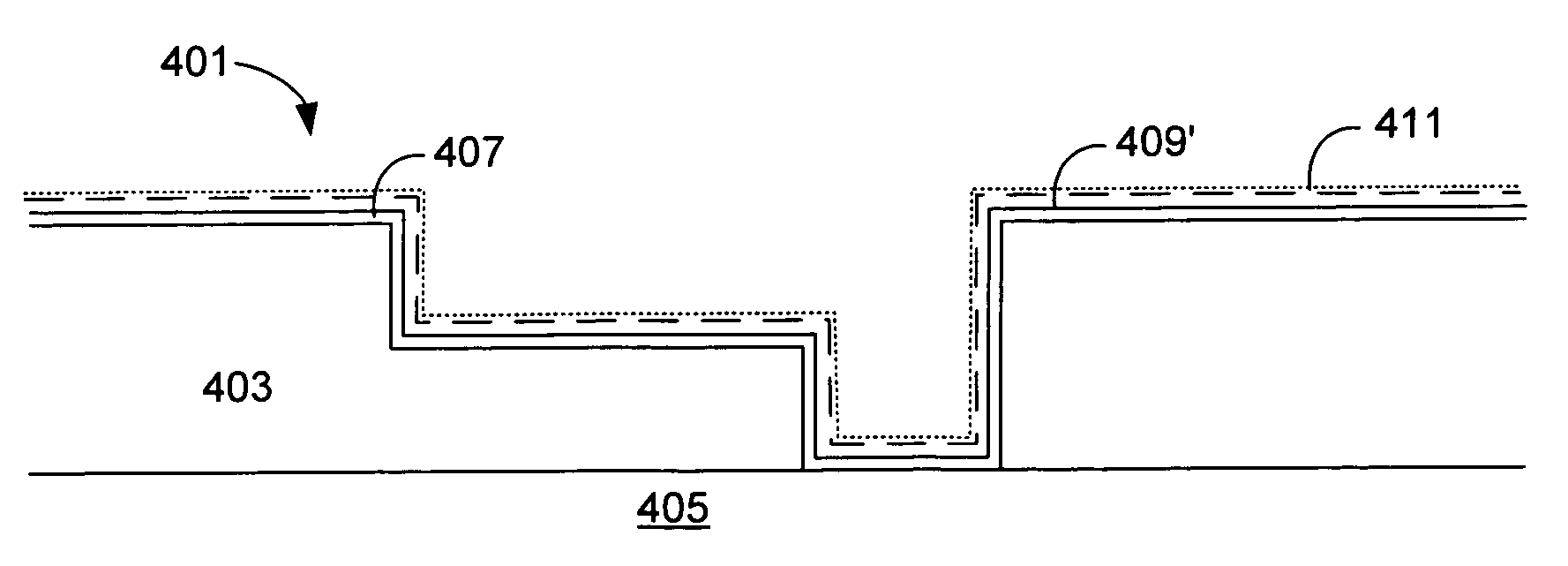ALD of tantalum using a hydride reducing agent
a technology of hydride reducing agent and tantalum, which is applied in the direction of coating, chemical vapor deposition coating, metallic material coating process, etc., can solve the problems of reducing resistance, poor adhesion of copper seed layer (and copper in general) to the underlying diffusion barrier layer, and diffusion barrier materials that are not sufficiently conductive to support direct electroplating of copper. , to achieve the effect of reducing hydrid
- Summary
- Abstract
- Description
- Claims
- Application Information
AI Technical Summary
Benefits of technology
Problems solved by technology
Method used
Image
Examples
Embodiment Construction
[0019]Introduction
[0020]In the following detailed description of the present invention, numerous specific embodiments are set forth in order to provide a thorough understanding of the invention. However, as will be apparent to those skilled in the art, the present invention may be practiced without these specific details or by using alternate elements or processes. In other instances well-known processes, procedures and components have not been described in detail so as not to unnecessarily obscure aspects of the present invention.
[0021]Atomic layer deposition (ALD) can be considered a variant of the well-established chemical vapor deposition (CVD), but based on separated surface-controlled reactions. In ALD, reactants are directed alternately over a substrate surface as depicted in FIG. 1, separated by purging steps using an inert gas or other method. ALD relies on the chemisorption of a gaseous precursor 109 (a tantalum halide in this case) to form a “saturated layer” of the precu...
PUM
| Property | Measurement | Unit |
|---|---|---|
| temperatures | aaaaa | aaaaa |
| thickness | aaaaa | aaaaa |
| thickness | aaaaa | aaaaa |
Abstract
Description
Claims
Application Information
 Login to View More
Login to View More - R&D
- Intellectual Property
- Life Sciences
- Materials
- Tech Scout
- Unparalleled Data Quality
- Higher Quality Content
- 60% Fewer Hallucinations
Browse by: Latest US Patents, China's latest patents, Technical Efficacy Thesaurus, Application Domain, Technology Topic, Popular Technical Reports.
© 2025 PatSnap. All rights reserved.Legal|Privacy policy|Modern Slavery Act Transparency Statement|Sitemap|About US| Contact US: help@patsnap.com



